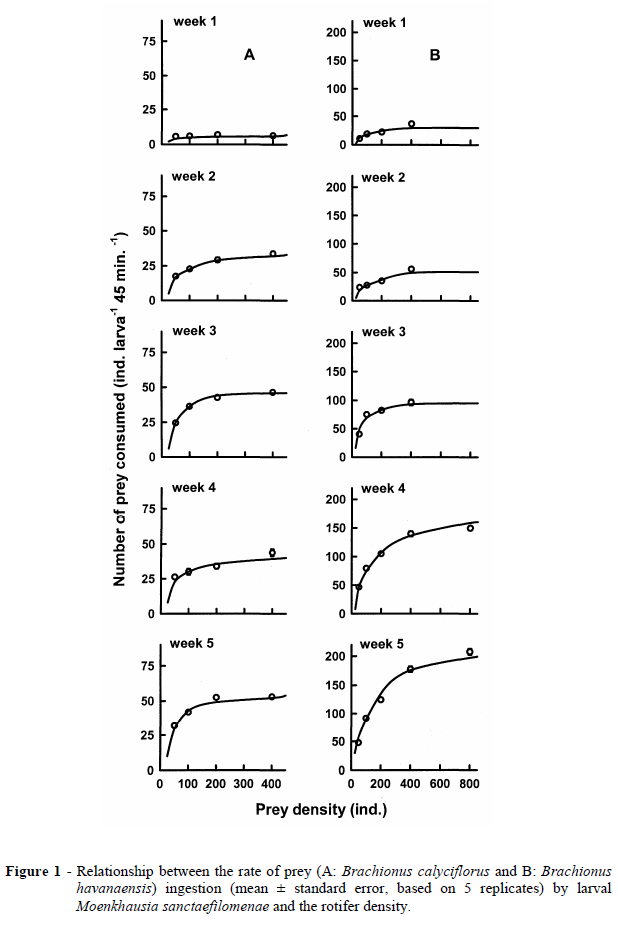Studies were carried out to quantify the functional response and prey selectivity of larval (1-5 weeks old) of Moenkhausia sanctaefilomenae, a widely cultured ornamental fish, using four rotifers (Brachionus calyciflorus, B. havanaensis, B. patulus and B. rubens) as prey. Regardless of larval age, B. havanaensis was not selected, while B. rubens and B. calyciflorus were preferred. B. patulus was selected only after three weeks. When fed B. calyciflorus, the larvae showed increased prey consumption with increasing age, but remained as plateau around 80 prey individuals. M. sanctaefilomenae consumed much lower individuals of both B. havanaensis and B. patulus, while B. rubens was consumed in higher numbers starting from the first week (about 35 ind. larva-1 45 min.-1). Thus, the maximum number of individuals of each Brachionus species consumed by the larval M. sanctaefilomenae showed significant (p<0.05) differences among the prey types.
Prey-predator interactions; zooplankton; fish-feeding; Brachionus




